Stewart Brand's Blog, page 16
February 6, 2020
A Useful Primer for Complexity Science
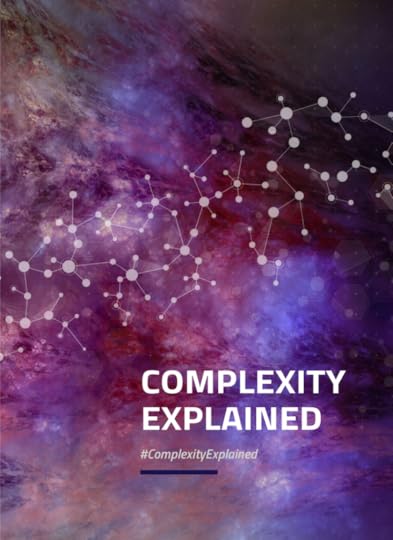 Graphics: Serafina Agnello
Graphics: Serafina AgnelloComplexity Explained is a new project that distills key aspects of complexity science, also known as complex science systems, into an easy-to-digest, interactive visual explainer.
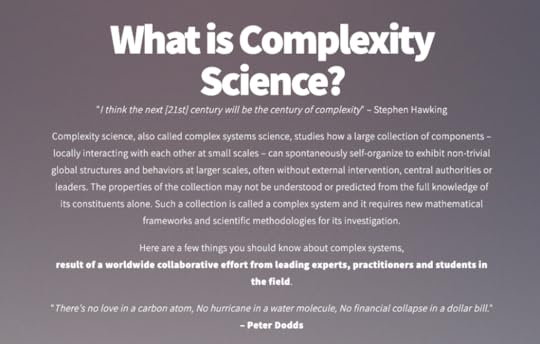

The explainer is also available as a free booklet, downloadable at this link.

February 3, 2020
Podcast: 24/6: The Power of Unplugging One Day A Week | Tiffany Shlain
As the world is becoming more technologically connected, finding time for oneself and face-to-face connections is becoming increasingly difficult. Many of our talks at Long Now have aimed to help expand our collective now by centuries or even millennia, but what about our personal present? Tiffany Shlain’s new book 24/6: The Power of Unplugging One Day A Week discusses one way to slow down and be more engaged: a technological shabbat, or day of rest. She explains some of the neuroscience, philosophy, psychology, and history of this 3000 year old concept, and how it can help promote creativity in our busy world.
Honored by Newsweek as one of the “Women Shaping the 21st Century,” Tiffany Shlain is an Emmy-nominated filmmaker, founder of The Webby Awards and author of 24/6: The Power of Unplugging One Day A Week. Tiffany’s films and work have received over 80 awards and distinctions including being selected for the Albert Einstein Foundation Genius:100 Visions of the Future. She lectures worldwide on the relationship between technology and humanity.
Listen on Spotify.
Listen on Apple Podcasts.

January 31, 2020
New Images of the Sun Captured by Impressive New Telescope in Hawaii
 NSO/NSF/AURA
NSO/NSF/AURAIn a piece for The New York Times, Dennis Overbye describes the remarkable images of the sun captured by the new Daniel K. Inouye Solar Telescope in Hawaii. Our closest star, never before seen in such detail, now resembles a “boiling pot of popcorn” thanks to the 158 inches diametric primary mirror of the telescope:
Every second, thermonuclear reactions in the center of the Sun turn 5 million tons of hydrogen into pure energy. That energy makes its way outward, through boiling gas pocked with magnetic storms that crackle, whirl and lash space with showers of electrical particles and radiation.
Caught in striking detail, the sun’s face is divided into “kernels”: cell-like structures, each about the size of Texas, that carry heat from the inside of the sun to the outside. Hot gas rises in the bright centers of the cells, cools and then sinks back down in the dark lanes separating the cells.
Dennis Overby, The New York Times

January 29, 2020
Podcast: Long-term Thinking in a Distracted World | Bina Venkataraman
What does practical long-term thinking look like? Bina Venkataraman’s new book, The Optimist’s Telescope: Thinking Ahead in a Reckless Age, brings this abstract question to life. Through a series of anecdotes and case studies that draw from her background in public policy, climate change strategy, and journalism, Venkataraman explores pragmatic tactics that can help us think more clearly about our long-term future.
Bina Venkataraman is the editorial page editor of The Boston Globe. Before joining the Globe, she served as a senior adviser for climate change innovation in the Obama White House, was the director of Global Policy Initiatives at the Broad Institute of MIT and Harvard, and taught in the Program on Science, Technology, and Society at MIT.
Listen on Spotify.
Listen on Apple Podcasts.

January 23, 2020
The History of Humanity: An Immersive Art Installation

Sara Barnes has recently written a piece for My Modern Met detailing an immersive art installation, which explores human history through a sculptural narrative detailing humanity’s greatest paradigm shifts. The installation, entitled Memory Palaces, was created by artist and stage designer Es Devlin, as a chronological landscape of the evolution of human thought and action. The installation can be viewed at London’s Pitzhanger Manor & Gallery.
“The monochromatic space was constructed in a rounded room equipped with mirrors to multiply the area and produce the illusion that the viewer was standing on the edge of the world. Along its surface were symbols of these momentous events carved out of bamboo. Some of the memories included were: the first cave drawings in southern Africa; Nicolaus Copernicus drawing the first heliocentric map of the universe in 1543; Rosa Parks refusing to give up her seat on the bus in 1955; and Greta Thunberg and her climate change strike in 2018.”
Sara Barnes, My Modern Met

January 20, 2020
Long Quotes: Martin Luther King
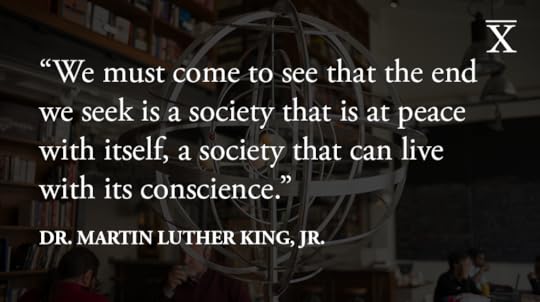
“We must come to see that the end we seek is a society that is at peace with itself, a society that can live with its conscience.” – Dr. Martin Luther King, Jr.

January 14, 2020
The Past and Future of the Earth’s Oldest Trees
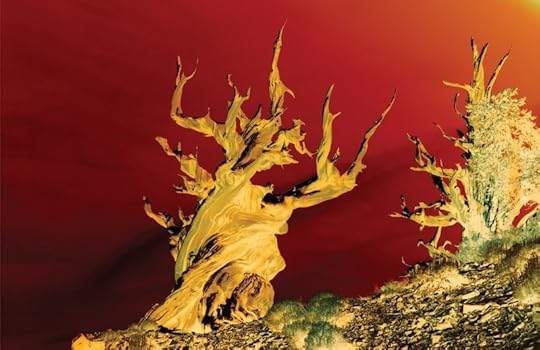
Alex Ross has written a moving tribute to Long Now’s unofficial mascot, the bristlecone pine, in The New Yorker.
What is most astonishing about Pinus longaeva is not the age of any single organism but the collective oldness and otherness of its entire community. No two super-elderly trees look alike, to the point where they have acquired the characteristics of individuals. Trees are prone to anthropomorphism; we project our dreams and our anxieties onto them. Bristlecones have been called elders, sentinels, sages. The possibility that climate change will cause their extinction has inspired a spate of alarmed news stories, although tree scientists tend to discount the idea that the bristlecones are in immediate danger. They have survived any number of catastrophes in the past; they may survive humanity.
The piece mentions a study from a few years back about the bristlecone being potentially threatened by climate change. At the time, we interviewed Scotty Strachan, an environmental scientist doing research on bristlecones on Long Now’s Nevada property, who took issue with aspects of the study and subsequent coverage. The interview is a useful companion to The New Yorker piece.
The piece also mentions Long Now as being part of the “bristlecone cult”:
The bristlecone cult is varied and intense. Artists tease ghostlike figures from their writhing shapes. Creationists have tried to reconcile the bristlecones with a putative cosmological starting date of 4004 B.C. (Methuselah fits their chronology, but the older remnants have to be discarded.) The Long Now Foundation, a futuristic organization based in San Francisco, bought land in the area of Mount Washington, Nevada, in large part because it contained bristlecone pines. Jeff Bezos, a member, is funding the construction of a clock, in a mountain in Texas, that will tick for ten thousand years. Long Now hopes to erect a similar clock on Mt. Washington.
As Long Now cofounder Stewart Brand noted when sharing the piece on Twitter: “The only privately-owned grove of bristlecone pines in the world belongs to The Long Now Foundation in Nevada, surrounded by a National Park, studied by scientists. They are living 10,000-years Clocks.”

January 10, 2020
A Prescient Prediction from a Reader of Seventeen Magazine
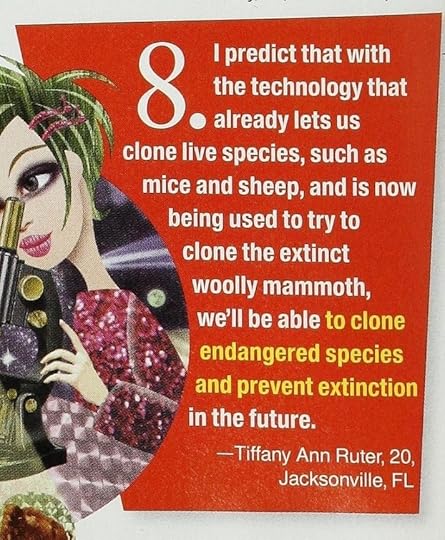
In 02000, Seventeen magazine asked its readers to send in predictions about the year 02020. Over a decade before the founding of Revive & Restore, Tiffany Ann Ruter of Jacksonville, Florida had this to say:
I predict that the technology that already lets us clone live species, such as mice and sheep, and is now being used to try to clone the extinct woolly mammoth, we’ll be able to clone endangered species and prevent extinction in the future.

January 7, 2020
Long Quotes: Zora Neale Hurston
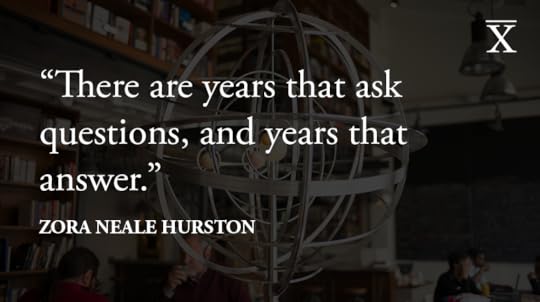
Zora Neale Hurston, author of Their Eyes Were Watching God (01937), was born on this day in 01891.
“There are years that ask questions, and years that answer.”
Zora Neale Hurston

January 6, 2020
Kevin Kelly Appears on Jason Silva’s Flow Sessions Podcast
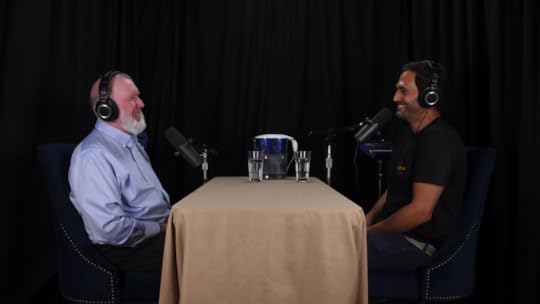
Long Now board member Kevin Kelly recently sat down with Jason Silva on his Flow Sessions podcast for a wide-ranging interview about the deeper sides of technology.
I’m part of the Long Now Foundation, which is trying to take a long-term view of things. And I realized recently that that long view is really taking the view of systems; it’s a systems viewpoint. And if you look at things as systems, you automatically have a kind of overview. The big view. And I’ve been looking at technology with the big view. To get that big view you have to get out of yourself. You have to transcend. You have to have this distant perspective. And yet, for it to be valid, you have to remain honest and connected on the ground or else it doesn’t make sense. And so trying to stand with one foot in the real here-and-now and one foot with the cosmic billions—if you can do that, then I think you an be helpful in terms of looking at, “Hey, this is where we’re going. Hey, this is where we’ve been. Hey, this is where we are in the context of the cosmos.”
Kevin Kelly
You can find the podcast on Spotify here, or watch it on YouTube here.

Stewart Brand's Blog
- Stewart Brand's profile
- 291 followers



